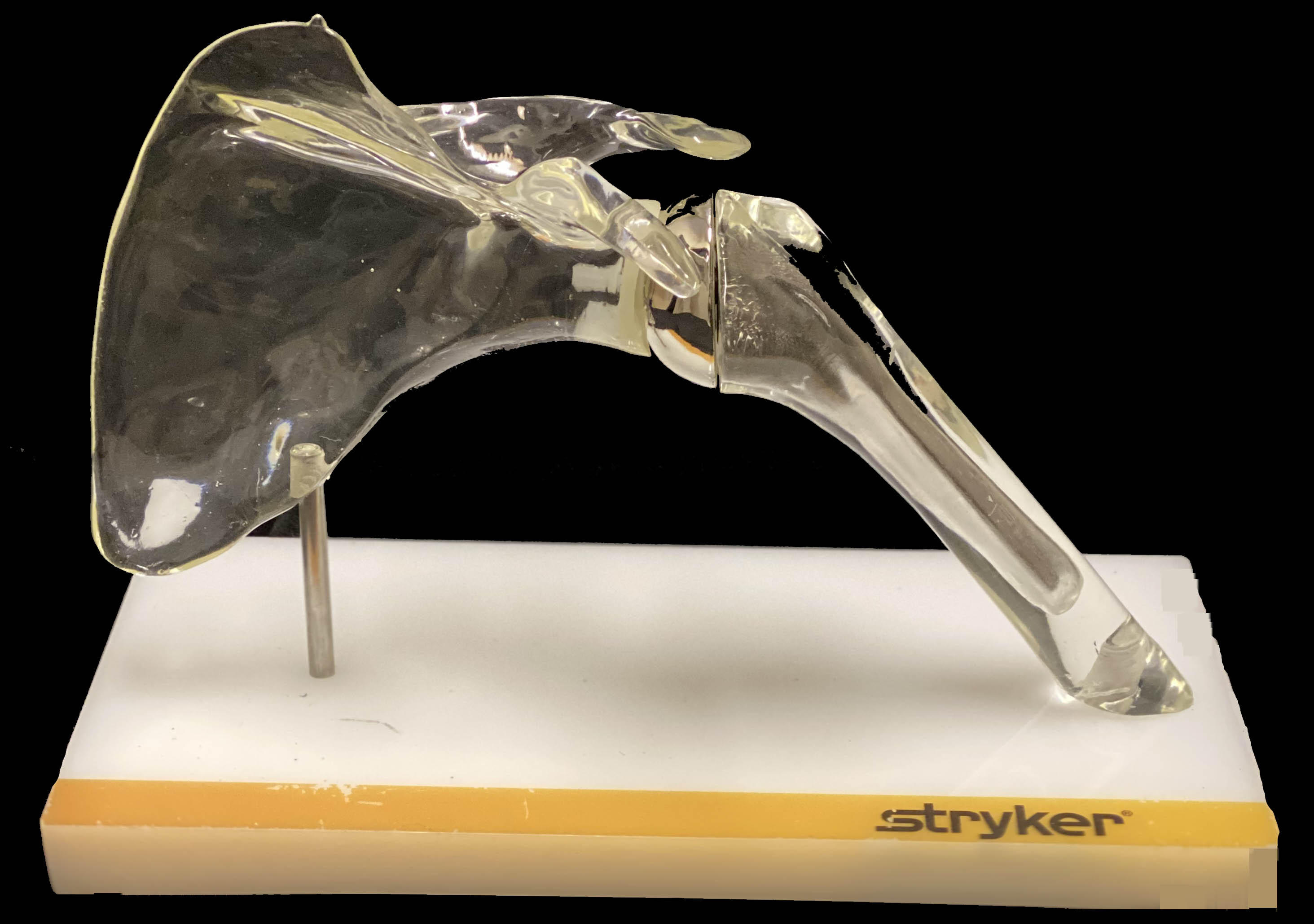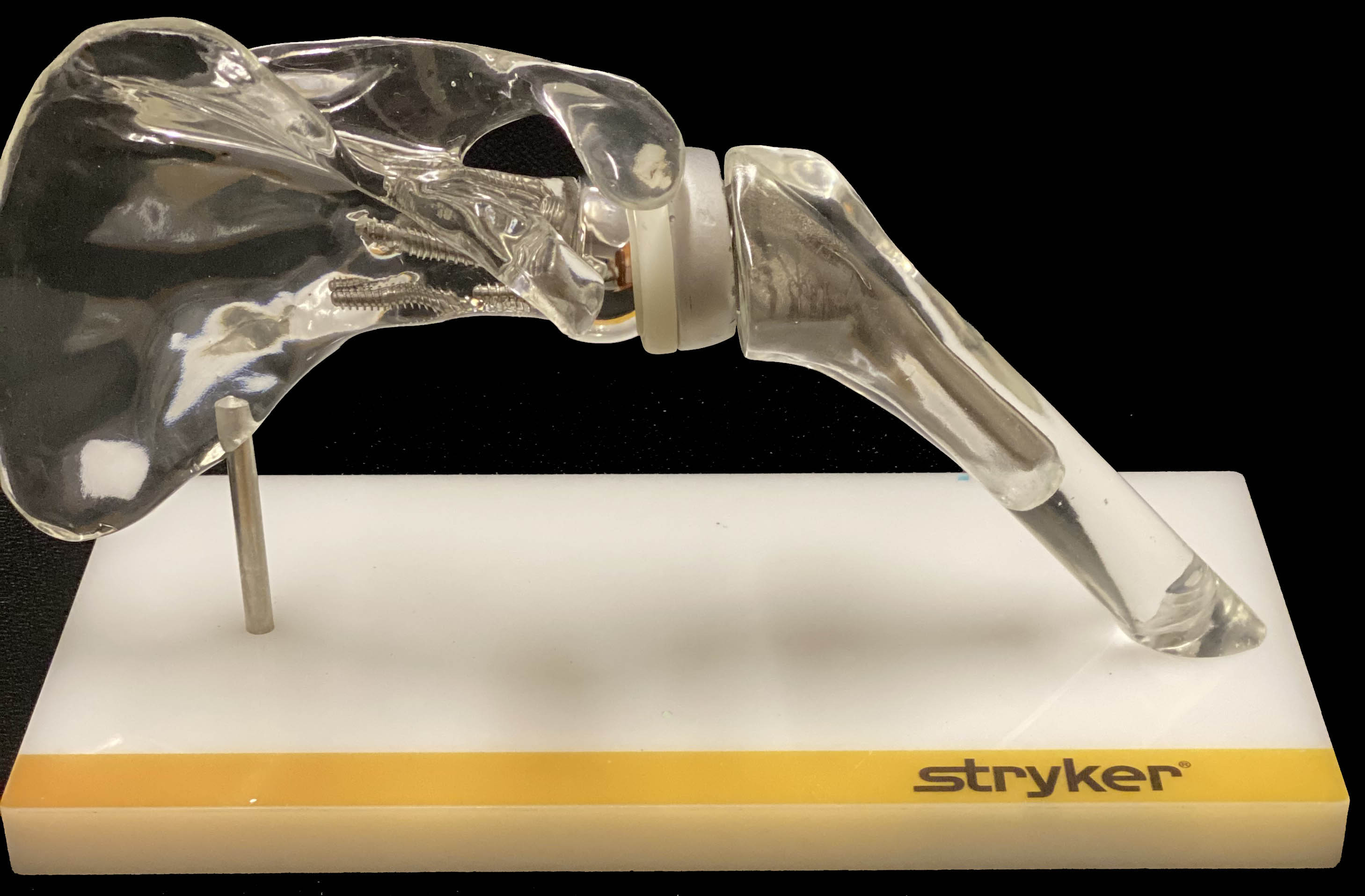

Shoulder joint replacement refers to a surgical procedure during which the damaged components of the shoulder’s ball and socket joint are removed and then replaced with prosthetic devices. It is beneficial for individuals who have been debilitated by degenerative joint disease, other forms of arthritis, or have sustained certain severe shoulder fractures. Shoulder joint replacement may be recommended in situations where conservative non-surgical therapy or other procedures have not provided relief from significant shoulder pain, stiffness, and loss of motion.
When arthritic and degenerative changes in the shoulder joint occur the cartilage that covers the rounded head of the humerus and lines the socket of the shoulder blade is lost. The underlying bony surfaces of the ball and socket joint develop spurs and other irregularities. Once protected from contact these bones begin to rub against each other making shoulder movement limited and painful. As the shoulder joint damage increases the pain, stiffness and weakness grow more debilitating.
The goal of shoulder joint replacement is to alleviate severe symptoms and restore function to the shoulder so that normal daily activities can be resumed. The type of shoulder replacement surgery that is indicated depends on the condition of the shoulder. A total shoulder replacement surgery involves removing the damaged humeral head, replacing it with a metal ball and relining the glenoid cavity (the socket) with a smooth plastic surface. In certain cases other procedures like a partial shoulder replacement involving just the humeral head, or resurfacing the joint surface may be recommended.
If conventional shoulder surgery cannot address the effects of severe arthritis, there is significant rotator cuff damage, or a previous shoulder replacement has failed, a more recent procedure, known as a reverse total shoulder replacement may be indicated. In this procedure the replacement ball and socket relationship is switched allowing other muscle groups to help stabilize and move the shoulder.
Total rehabilitation from shoulder replacement surgery can take several months. Adhering to the doctor’s post-operative guidelines as well as a careful, well- planned rehabilitation program are essential in order to achieve the maximum benefits of these procedures.

